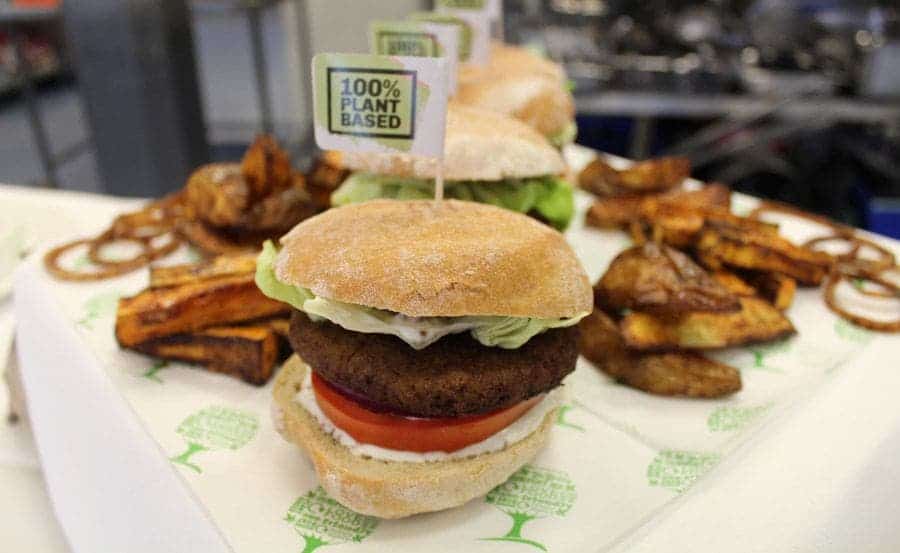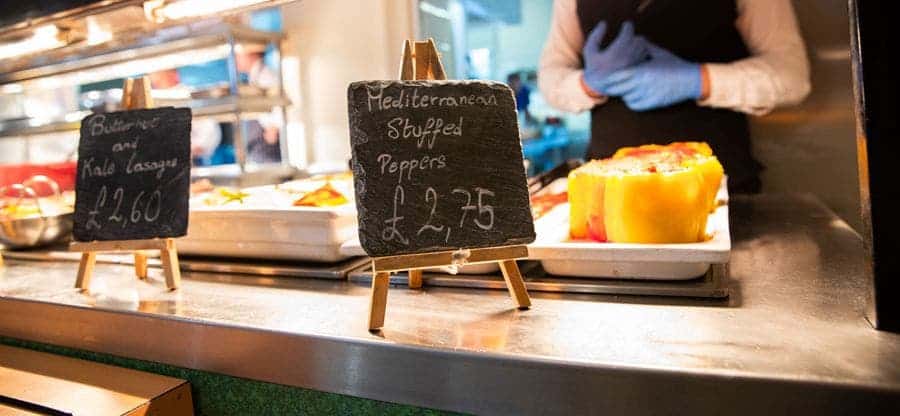At one cafeteria, increasing the number of vegetarian choices increased the proportion of plant-based purchases by 40-80% without affecting overall food sales.

Whether it’s sports, music, or food, we all like different things. But one thing we all like is having options to choose from. When you’re forced to just pick the only available option, even if it’s something you like, you might not be all that happy with it.
When it comes to food, not having options can be particularly annoying — ask any vegetarian (or anyone with any dietary restriction) and they’ll tell you the same thing: when you’re trying to eat out somewhere and they only have 1-2 options, it just sucks.
For researchers, vegetarianism is particularly interesting because it’s not only healthy, but it’s also good for the planet. A UN report even suggests that even if we transition to renewable energy, we still need to reduce the amount of meat in our diets to limit the worst impacts of climate change. But in order to do that, we need pubs, restaurants, and cafeterias to provide more options — or so a new study suggests.
A nudge in the veg direction
The study increased the number of vegetarian options at three cafeterias in Cambridge, UK, from 1 in 4 to 2 in 4. Overall, a total of 94,000 cafeteria meal choices were analyzed.
A typical menu at the University Centre’s Main Dining Hall would look something like this:
- Aubergine rogan josh (a type of eggplant curry)
- Butternut squash lasagne
- Roast chicken
- Breaded pork escalope
For starters, there was no significant change in the total number of meals ordered — adding an extra vegetarian option did not affect overall sales. But consumers did opt for more vegetarian options, by a range of 40-80%. Remarkably, the biggest increases in plant-based meals were noted among the most carnivorous quartile of customers, showing that you don’t need to be a vegetarian to enjoy a plant-based meal once in a while.
Furthermore, there was no noted rebound effect. In other words, when people opted for a plant-based meal, this did not make it more likely for them to pick a meat-heavy one the next time around.
“The results are from the first major study to look at whether tweaking food availability can “nudge” people towards better decision-making for both human health and preservation of the planet,” an accompanying press release reads.

The authors emphasize the importance of sustainable food options, both from a health perspective and for sustainability. Studies have consistently highlighted the environmental impact of meat production to be much higher than plant-based alternatives. If we truly want to transition to a low-carbon future, we need to pay attention to our plates — and this type of study shows that a change is not always difficult to make. Sometimes, all you need are more options.
“Shifting to a more plant-based diet is one of the most effective ways of reducing the environmental footprint of food,” said study lead author Emma Garnett, a conservationist and PhD candidate from Cambridge’s Department of Zoology.
“Replacing some meat or fish with more vegetarian options might seem obvious, but as far as we know no one had tested it before. Solutions that seem obvious don’t always work, but it would appear that this one does.”
The results are especially significant since the intervention was so low effort. This type of approach is called choice architecture — the clients still have the right to choose, but they are “nudged” in a direction. In this case, however, it was a very light nudge — it’s not like plant-based meals were highlighted in any way or were dominant, they were just given the same prevalence.
Co-author Theresa Marteau, Professor of Behaviour and Health at Cambridge, commented:
“Education is important but generally ineffective at changing diets. Meat taxes are unpopular. Altering the range of available options is more acceptable, and offers a powerful way to influence the health and sustainability of our diets.”
Cambridge university cafeterias have also removed beef and lamb from their menus, replacing them with less carbon-intensive options (either other types of meat, like poultry or fish, or vegetarian options). As a result, they reported a 33% reduction in carbon emissions and 28% reduction in land use per unit of food — all while enjoying the same sales and offerig healthier options.
Food production is responsible for around a quarter of the global greenhouse gas emissions. Livestock is directly responsible for a third of this (and indirectly for even more), despite providing only 17% of the world’s calories.






